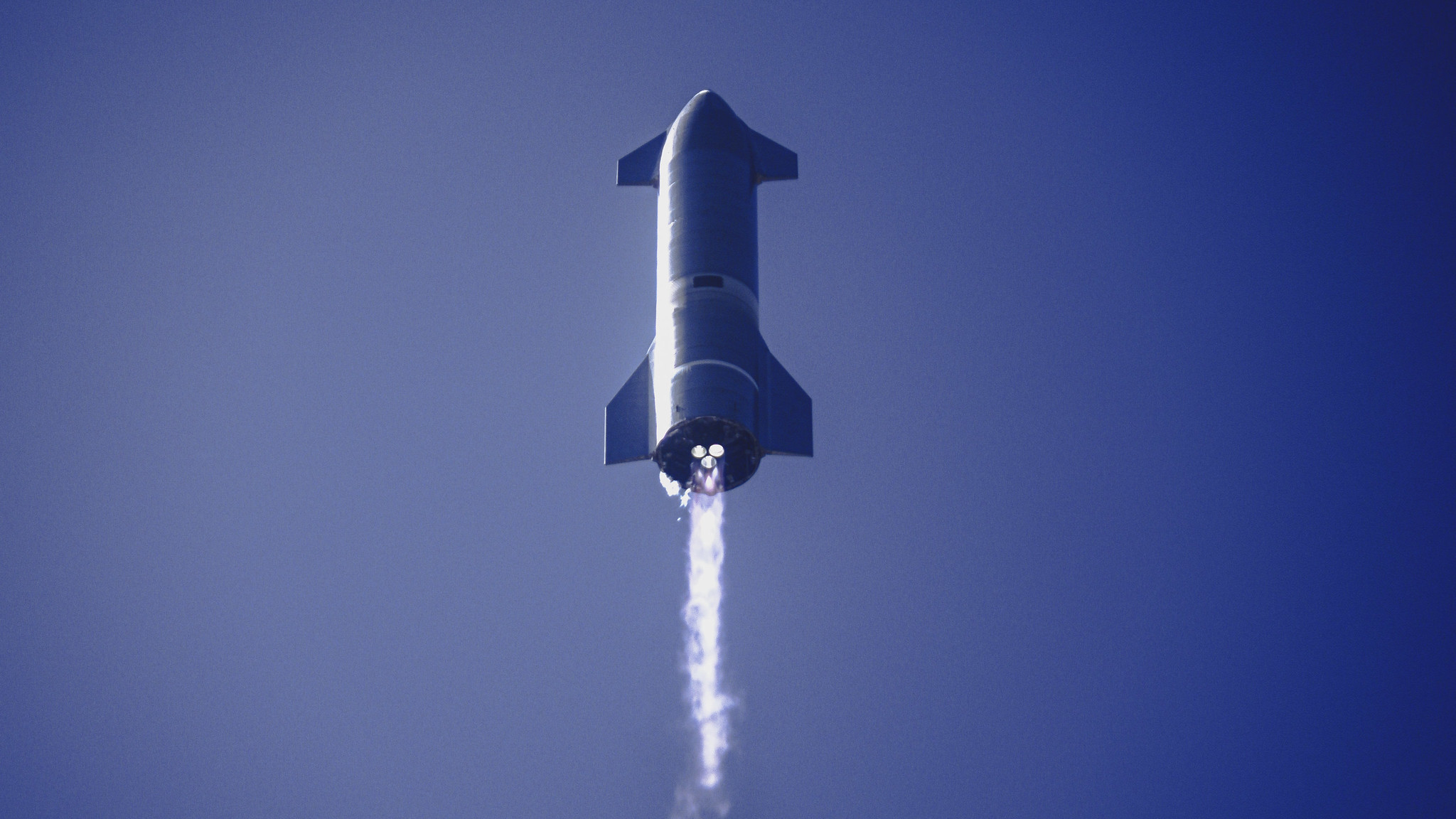FAA closes investigation of SpaceX's Starship SN9's test-flight crash

SpaceX's latest Starship prototype is a big step closer to liftoff.
Elon Musk's company is gearing up to launch that vehicle, known as SN10, on a 6-mile-high (10 kilometers) test flight from its South Texas site in the near future.
And such preparations can really ramp up now, because SpaceX and the U.S. Federal Aviation Administration (FAA) have just concluded an investigation of the last such flight, a Feb. 2 jaunt that ended with SN10's predecessor, SN9, exploding upon touchdown.
Starship and Super Heavy: SpaceX's Mars-colonizing vehicles in images
"The FAA closed the investigation of the Feb. 2 SpaceX Starship SN9 prototype mishap today, clearing the way for the SN10 test flight pending FAA approval of license updates," an FAA spokesperson said Friday (Feb. 19) in an emailed statement.
"The FAA provided oversight of the SN9 mishap investigation conducted by SpaceX. The SN9 vehicle failed within the bounds of the FAA safety analysis," the statement continued. "Its unsuccessful landing and explosion did not endanger the public or property. All debris was contained within the designated hazard area. The FAA approved the final mishap report, including the probable causes and corrective actions."
Space.com Collection: $26.99 at Magazines Direct
Get ready to explore the wonders of our incredible universe! The "Space.com Collection" is packed with amazing astronomy, incredible discoveries and the latest missions from space agencies around the world. From distant galaxies to the planets, moons and asteroids of our own solar system, you’ll discover a wealth of facts about the cosmos, and learn about the new technologies, telescopes and rockets in development that will reveal even more of its secrets.
SpaceX is developing Starship to take people and cargo to Mars and other distant destinations. The architecture consists of two reusable elements: a 165-foot-tall (50 meters) spacecraft called Starship and a giant rocket known as Super Heavy.
Breaking space news, the latest updates on rocket launches, skywatching events and more!
Both of these vehicles will be powered by SpaceX's next-generation Raptor engine. The final Starship will have six Raptors and Super Heavy will sport about 30 of them, Musk has said.
SpaceX is iterating its way toward the operational Starship via a series of increasingly complex prototypes, several of which have already gotten off the ground. The SN8 and SN9 vehicles — both of which had three Raptors, as SN10 does — flew about 6 miles high on Dec. 9, 2020 and Feb. 2, respectively. Both performed well until the very end, failing to stick their landings.
Such test flights require FAA approval. SpaceX launched SN8 in December despite having been denied a waiver to exceed the maximum public-safety risk that federal regulations allow, FAA officials said earlier this month. SpaceX then had to halt all testing at the South Texas site that could affect public safety until it completed an investigation into the incident and took FAA-approved corrective actions.
The resulting delay seemed to irritate Musk, who vented in a Jan. 28 Twitter post that "the FAA space division has a fundamentally broken regulatory structure."
Unsurprisingly, the ambitious Musk has an aggressive envisioned timeline for Starship. He said recently that he wants a prototype to reach Earth orbit this year and that the vehicle should be flying people regularly by 2023.
Mike Wall is the author of "Out There" (Grand Central Publishing, 2018; illustrated by Karl Tate), a book about the search for alien life. Follow him on Twitter @michaeldwall. Follow us on Twitter @Spacedotcom or Facebook.

Michael Wall is a Senior Space Writer with Space.com and joined the team in 2010. He primarily covers exoplanets, spaceflight and military space, but has been known to dabble in the space art beat. His book about the search for alien life, "Out There," was published on Nov. 13, 2018. Before becoming a science writer, Michael worked as a herpetologist and wildlife biologist. He has a Ph.D. in evolutionary biology from the University of Sydney, Australia, a bachelor's degree from the University of Arizona, and a graduate certificate in science writing from the University of California, Santa Cruz. To find out what his latest project is, you can follow Michael on Twitter.

